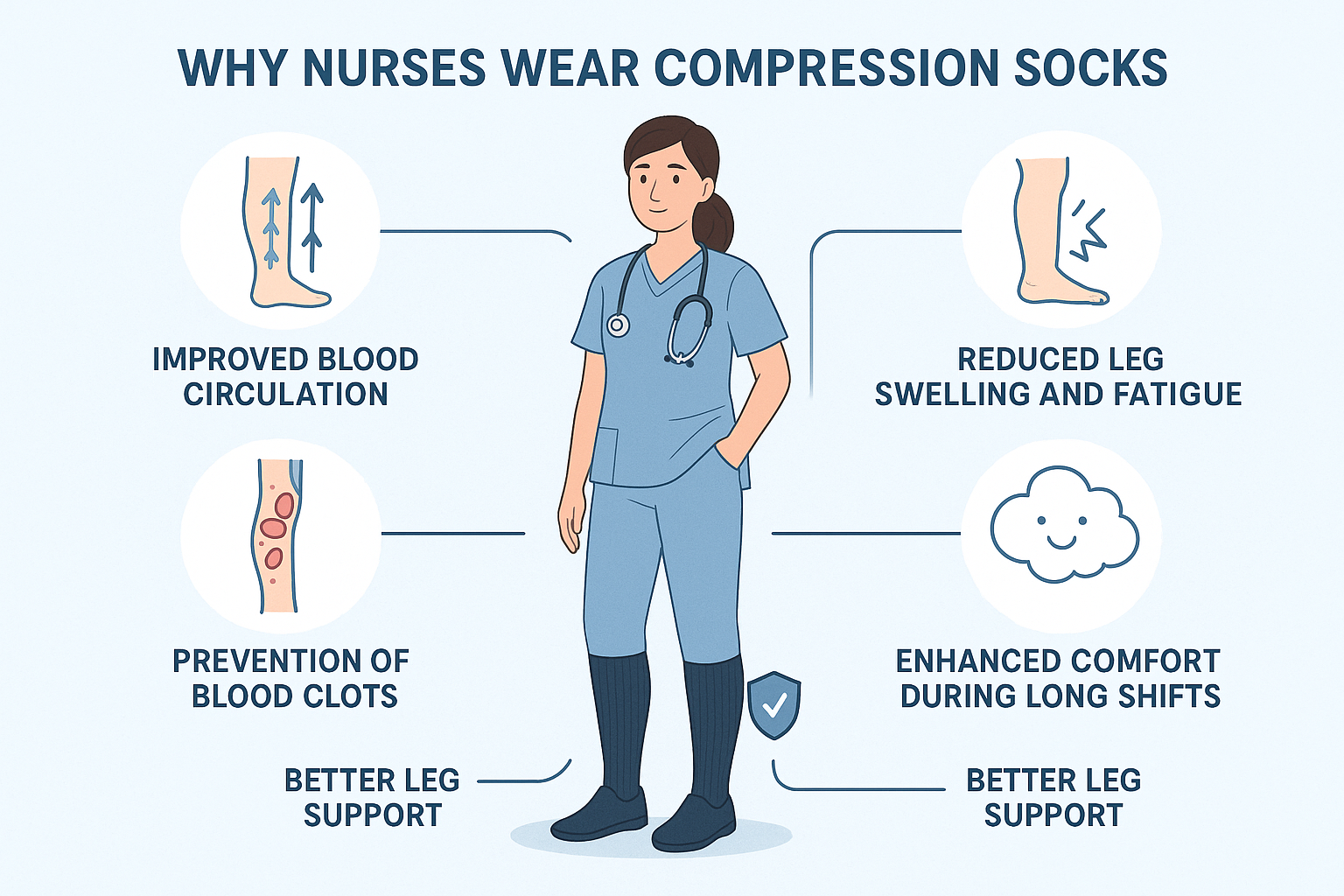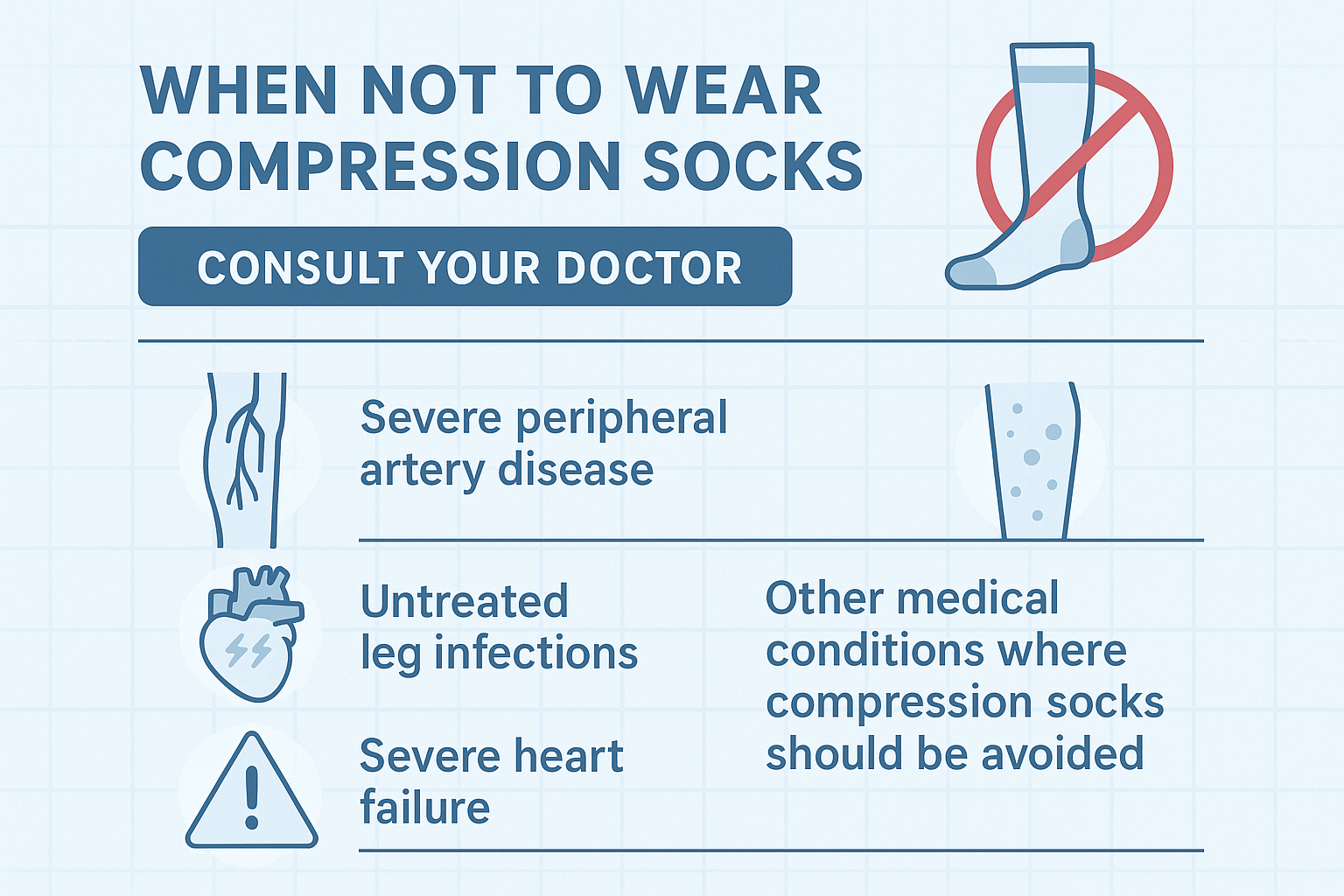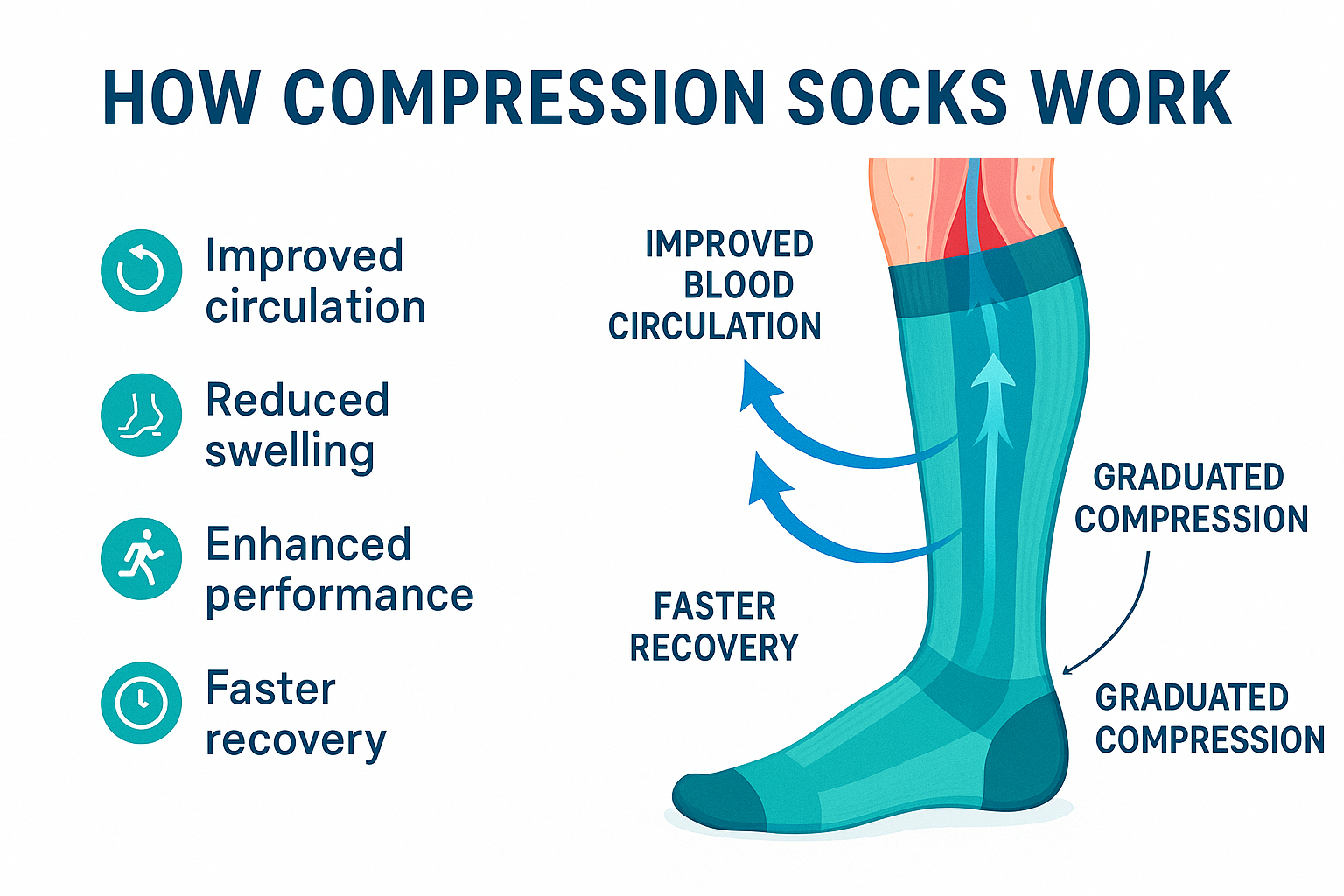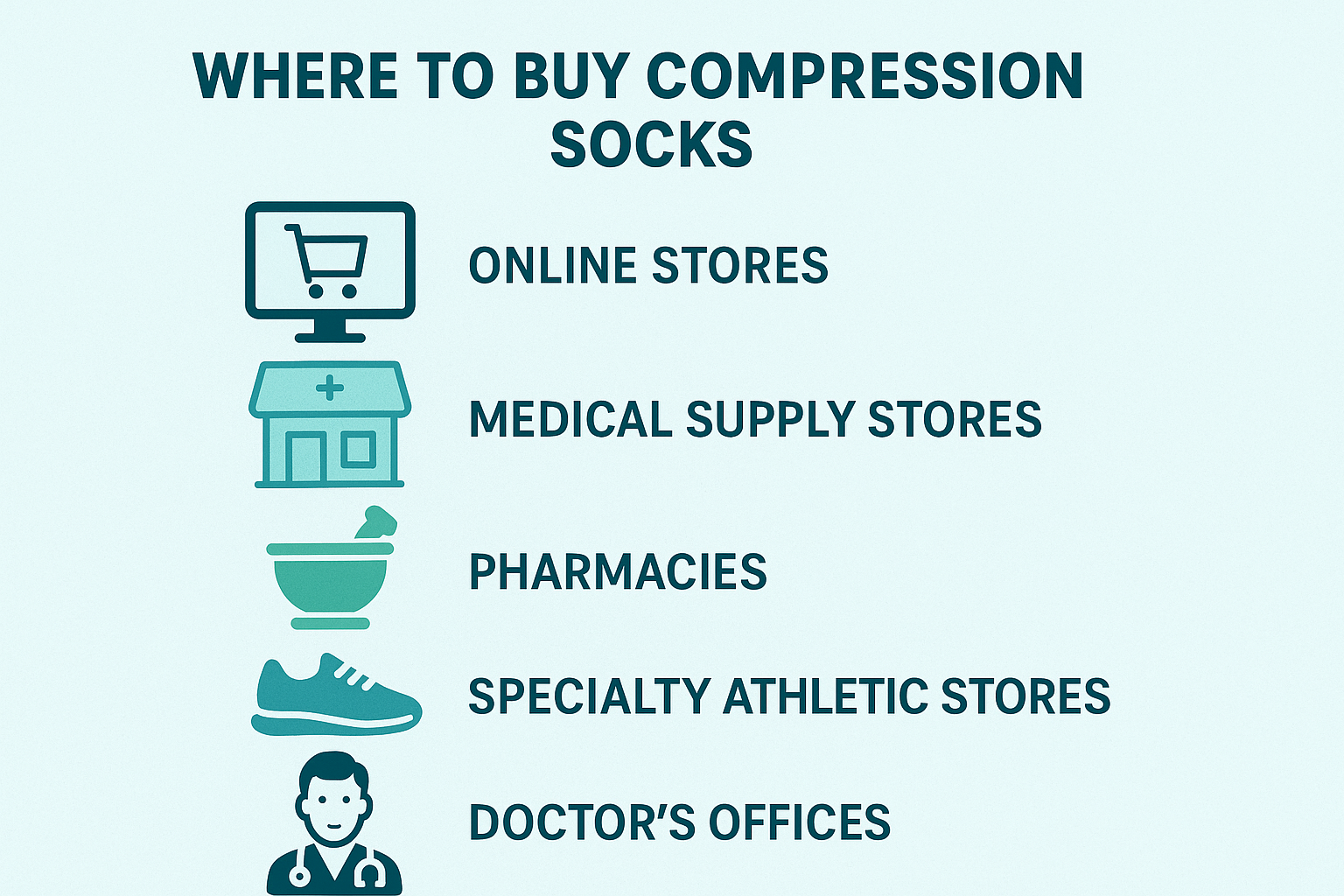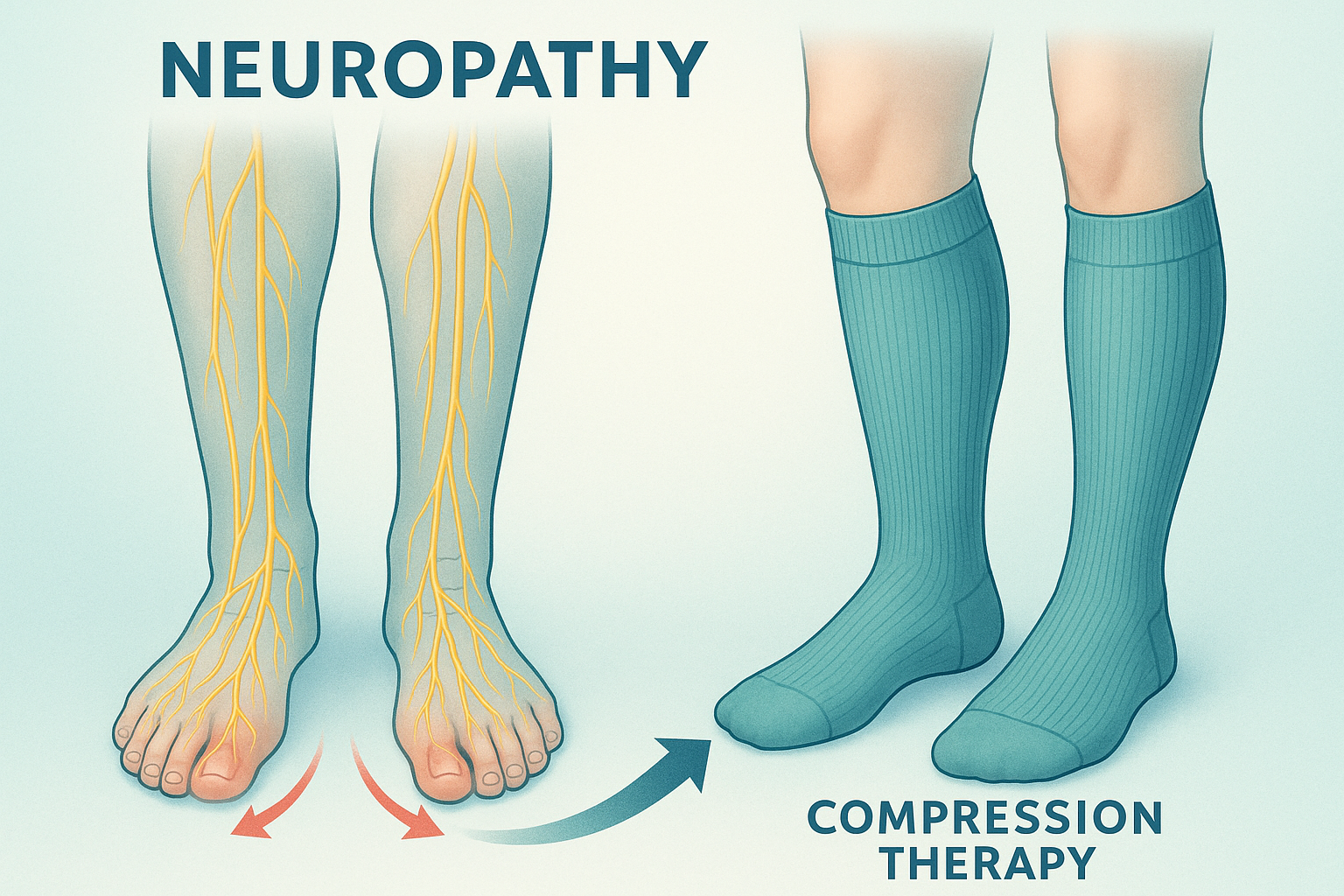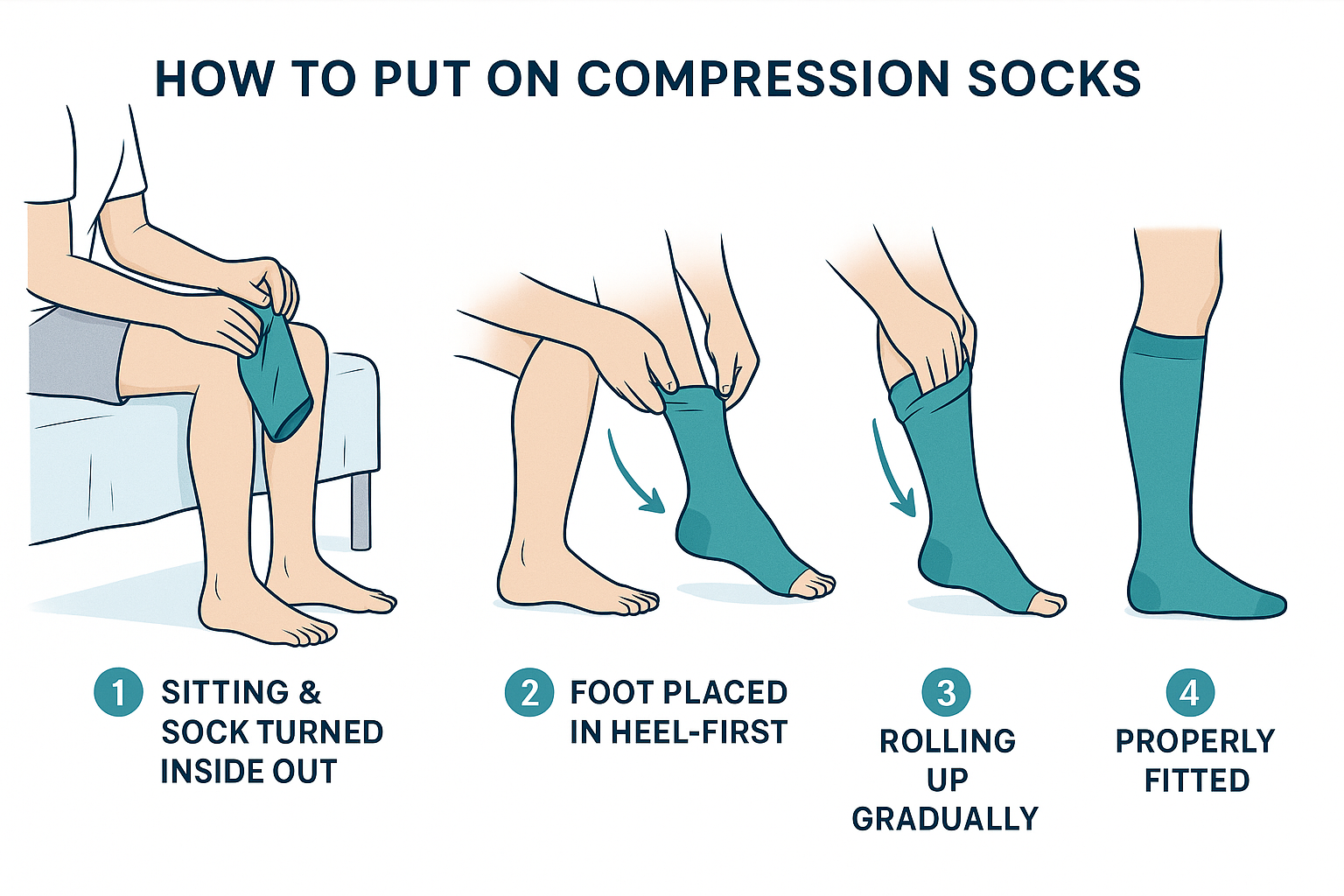
How to Put On Compression Socks
Compression socks are a proven way to improve circulation, reduce swelling, and support leg health. But if you’ve ever struggled to put them on, you’re not alone. Because they’re designed to fit snugly, compression socks can be tricky at first. The good news? With the right techniques, they’re easy to slip on and wear comfortably.
In this guide, we’ll show you how to put on compression socks step by step, share helpful tips, and answer the most common questions people ask about wearing them.
Why Are Compression Socks Hard to Put On?
Compression socks are intentionally tight because they provide graduated pressure, which is strongest at the ankle and lessens higher up the leg. This snug fit is what improves circulation, but it can make putting them on more challenging compared to regular socks.
Knowing the right method will save you time, reduce frustration, and ensure your socks work properly.
Step-by-Step: How to Put On Compression Socks
Follow these steps to easily put on your compression socks:
- Start with dry legs and feet. Moisture makes socks harder to slide on. If needed, use talcum powder.
- Turn the sock inside out (partially). Place your hand inside the sock, grab the heel, and turn the sock inside out until the heel is exposed.
- Place your foot in the sock. Slide your toes into the toe box and position your heel correctly in the heel pocket.
- Pull the sock up gradually. Roll the fabric over your ankle and calf, smoothing as you go to avoid wrinkles.
- Adjust for comfort. Make sure the top band is flat, not rolled, and the sock isn’t bunching anywhere.
This method is widely recommended by doctors and ensures the compression is applied evenly.
Tips to Make It Easier
- Put them on first thing in the morning: Swelling is lowest after waking up.
- Use rubber gloves: They provide grip and prevent fingernail damage to the fabric.
- Try a donning aid: Special devices can help slide socks over your foot and calf.
- Sit down: It’s easier to position the sock while seated.
- Smooth wrinkles: Wrinkles can cause uneven pressure and discomfort.
Common Mistakes to Avoid
- Rolling the sock down: This creates a tight band that cuts off circulation.
- Using lotion right before: Moisturizers make it harder to slide socks on. Apply at night instead.
- Wearing the wrong size: Too tight causes discomfort; too loose reduces effectiveness.
- Not pulling them high enough: Compression should cover the ankle and calf completely.
People Also Ask (FAQs)
What is the easiest way to put on compression socks?
The easiest method is the heel-pocket technique: turn the sock inside out to the heel, slide your foot in, and roll it up gradually. Using rubber gloves or a donning aid makes it even easier.
Should you put compression socks on before getting out of bed?
Yes, putting them on in the morning before swelling starts makes them easier to wear and more effective.
How do elderly people put on compression socks?
Seniors often use donning aids, zippers, or lower compression levels (8–15 mmHg) to make the process easier. Caregivers can also assist with application.
Can you use lotion before wearing compression socks?
It’s best to avoid lotion right before putting them on. Apply moisturizer at night so your skin is dry in the morning.
What tools help with putting on compression socks?
Rubber gloves, talcum powder, and sock donning devices are all effective aids for easier application.
Why do compression socks feel so tight?
They’re designed with firm elastic fibers to provide medical-grade pressure. If they’re painfully tight, you may need a different size or compression level.
How Long Should It Take to Put On Compression Socks?
Once you get the hang of it, putting on compression socks should take only a minute or two per leg. With practice and the right technique, it becomes second nature.
What to Do If You Can’t Put Them On
If you find it very difficult to apply compression socks:
- Switch to a lighter compression level (8–15 mmHg instead of 20–30 mmHg).
- Try knee-high instead of thigh-high styles.
- Use a donning device for assistance.
- Ask a caregiver, nurse, or family member for help.
When to Remove Compression Socks
Compression socks are typically worn during waking hours (8–12 hours a day) and removed before bed. You should also remove them if you notice:
- Severe discomfort or pain
- Numbness or tingling
- Skin irritation or indentations that don’t fade
Expert Tips for Long-Term Comfort
- Rotate pairs: Having multiple pairs makes daily wear easier.
- Wash regularly: Keeps elasticity strong and prevents bacteria buildup.
- Replace every 3–6 months: Compression weakens over time, reducing effectiveness.
- Choose breathable fabrics: Especially if wearing them for long shifts or in hot weather.
Conclusion: Mastering the Art of Putting On Compression Socks
So, how do you put on compression socks? With the right technique—starting in the morning, turning the sock inside out to the heel, and rolling it up gradually—you’ll find they’re much easier to wear than you think. Add in tools like gloves or donning aids, and anyone can apply them with ease.
Wearing compression socks daily supports circulation, reduces swelling, and improves overall leg comfort. Ready to experience the benefits yourself? Explore our full collection here: Shop Green Drop Compression Socks.



